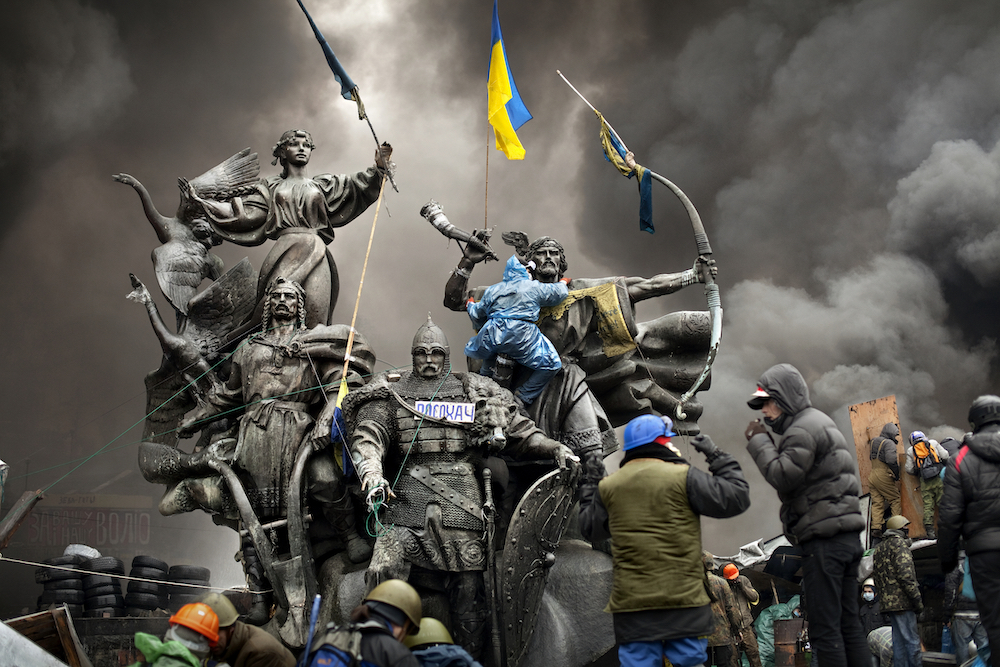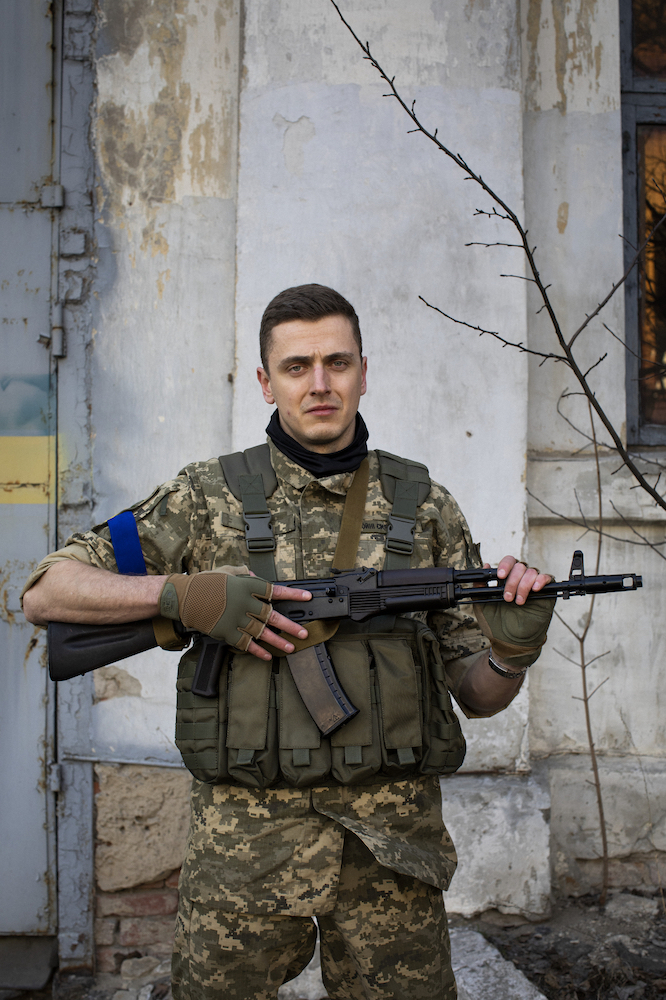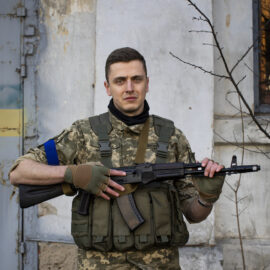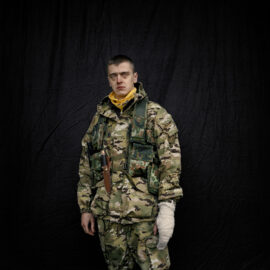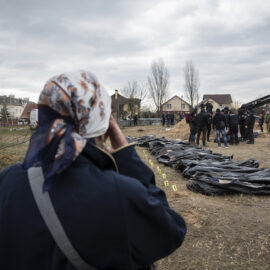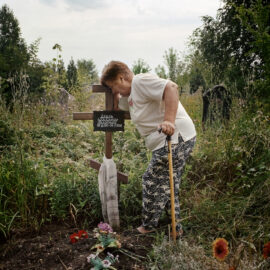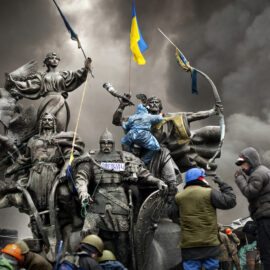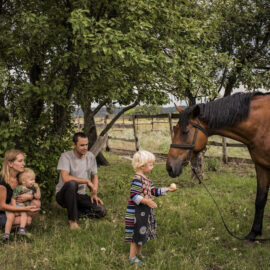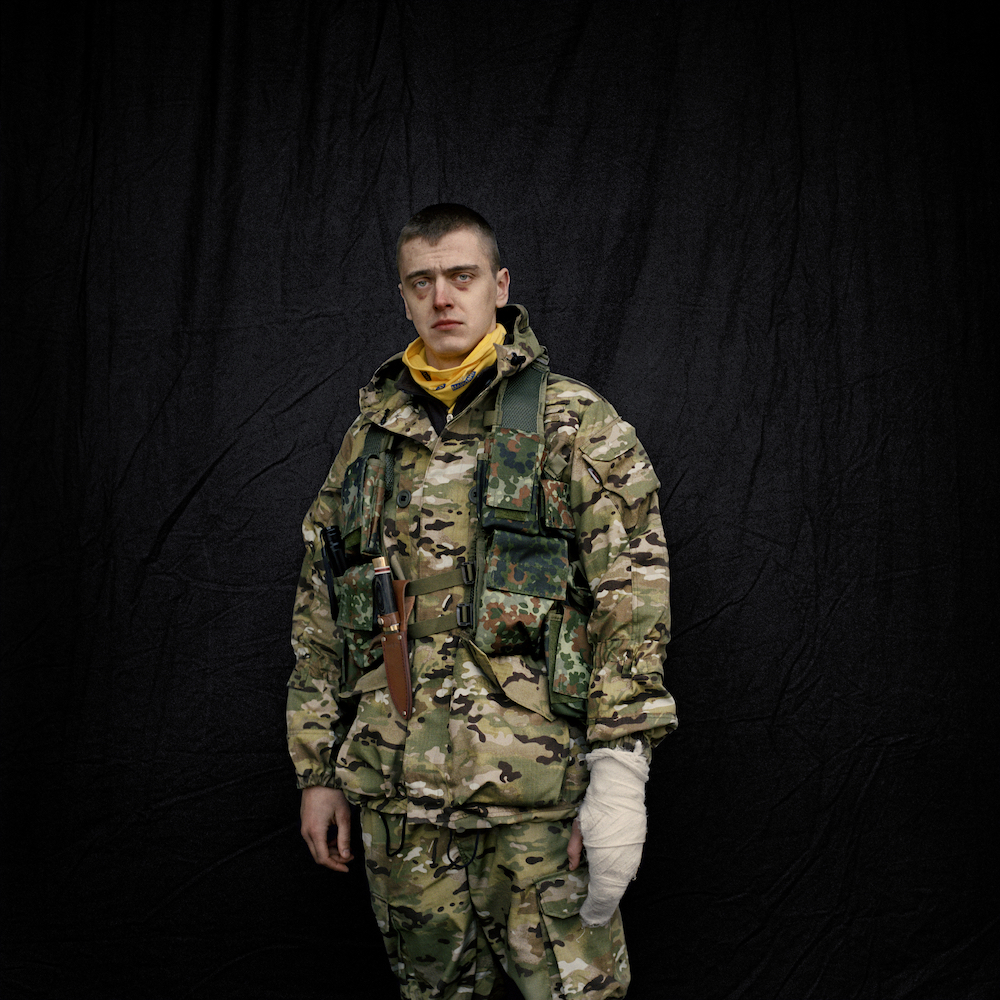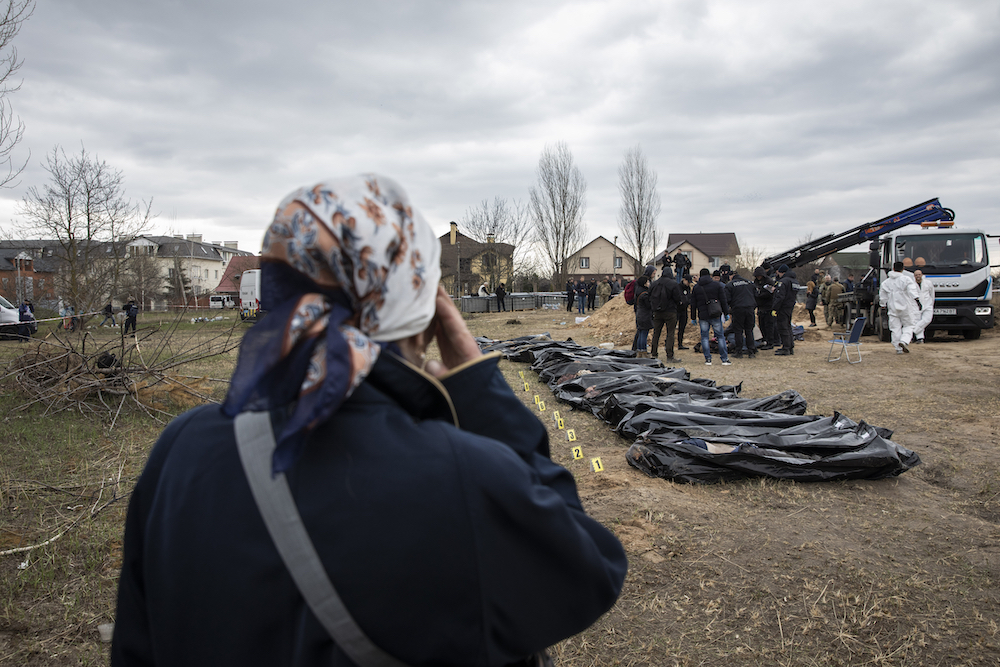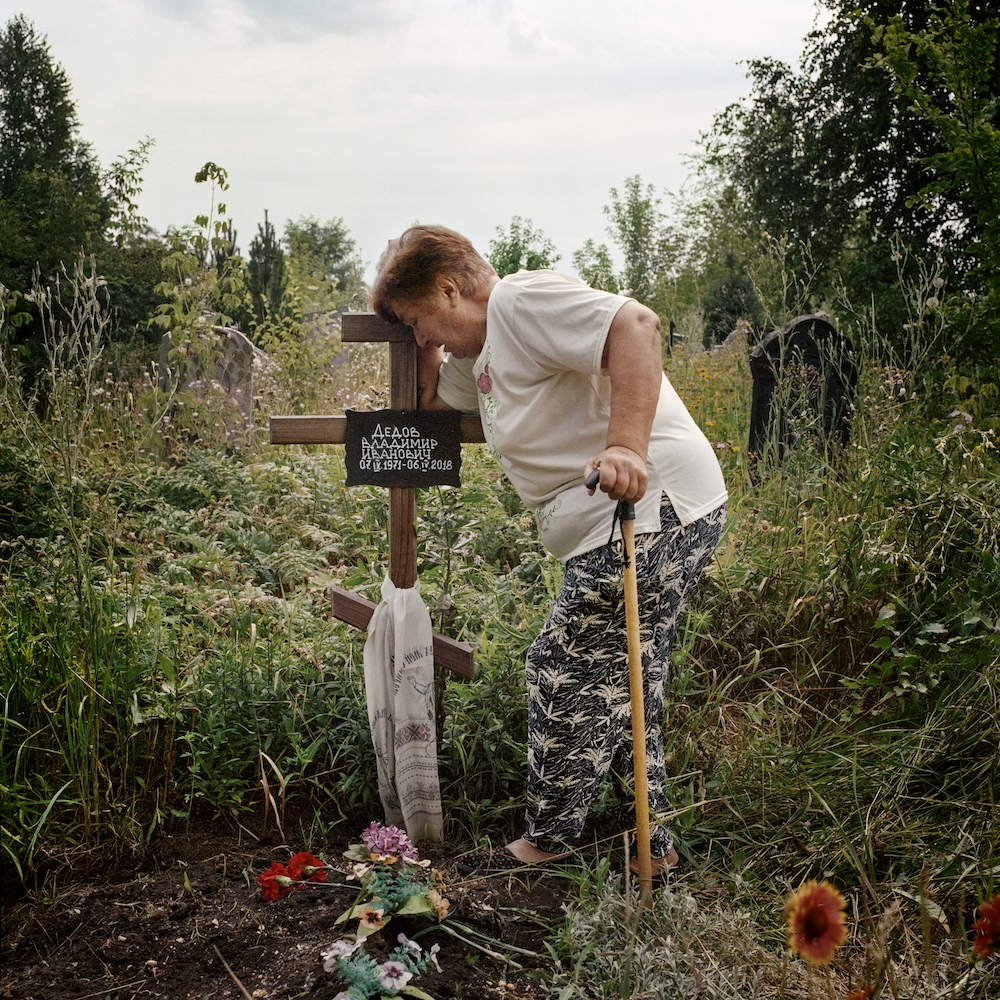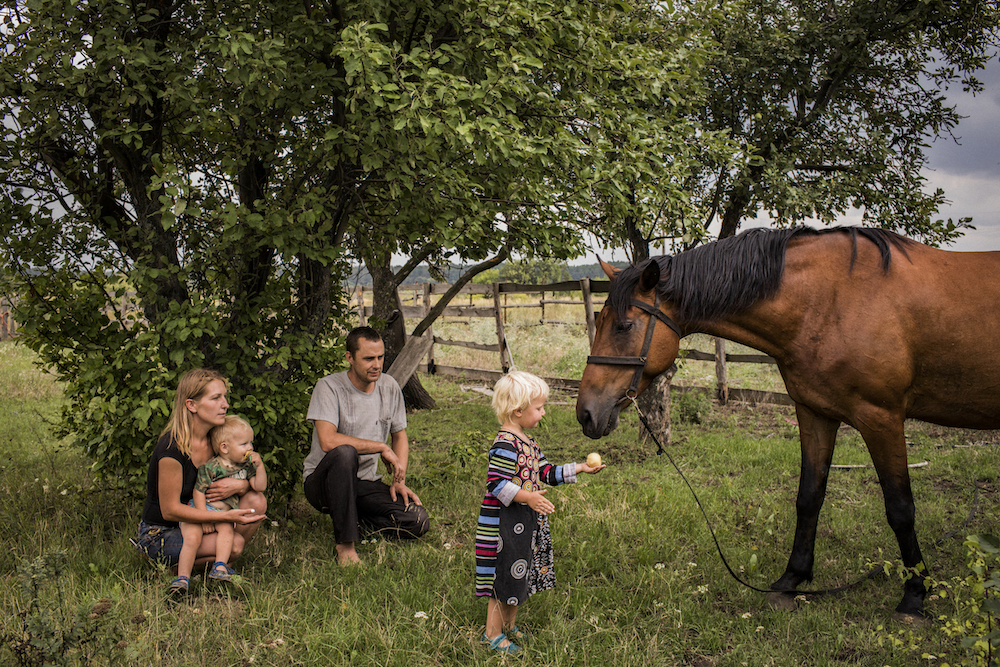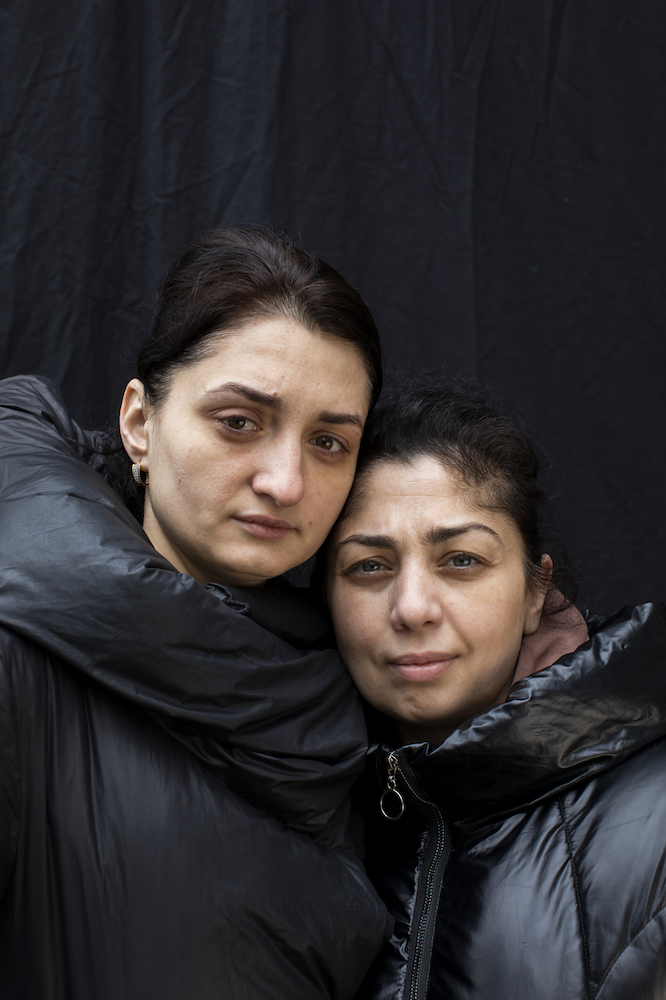Along the way, Taylor-Lind met Yevhen Shulga, a civilian protester. Sporting two black eyes, a concussion and a broken hand, the young man passed her pop-up studio as he made his way back towards the front line. His portrait became one of the defining images of her 2014 project Maidan, Portraits from the Black Square. The solemn photograph is now central to Ukraine: Photographs from the Frontline, her exhibition at London’s Imperial War Museum.
The exhibition’s most arresting image shows a smoke-filled scene in Kyiv’s Independence Square, where protesters are gathered tightly around a towering monument to the city’s founders. Reminiscent of a macabre Renaissance painting, Taylor-Lind clearly remembers the moment she took the photograph. “What I didn’t know when I made that picture, was that behind that wall of smoke, snipers had been positioned on rooftops,” she says. “By the time we got through the smoke and started making our way up the hill, the bodies of protesters and wounded protesters were being carried back down.”
Taylor-Lind could easily have left Ukraine after this experience, but she has returned many times over the last eight years. Ukraine: Photographs from the Frontline spans this whole period, during which she photographed the revolution, the war in Donbas, the impact of the Covid-19 pandemic and the full-scale Russian invasion. Reporting on these events, often for the likes of The Guardian and National Geographic, is a practice that Taylor-Lind considers important, but is also an ethically complex exercise.

